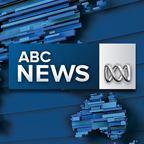
Updated
The Australian dollar dropped sharply on the back of the Reserve Bank governor's statement, despite the RBA holding interest rates steady for the eleventh straight month.
From levels around 76.8 US cents ahead of the 2:30pm release of the RBA board's decision and statement, the dollar quickly fell to 76.1, and it hasn't recovered any ground so far today.
But why?
"It looks like the Aussie dollar bulls bought the notion that we are in the midst of a global push by central bankers to co-ordinate a more hawkish message on monetary policy," said Greg McKenna, the chief market strategist at AxiTrader.
"And so they were disappointed when RBA governor Lowe delivered not the uber-hawkish statement that would fit the co-ordination narrative."
What McKenna's talking about are a series of comments by leading central bank officials - including the US Federal Reserve boss Janet Yellen, her deputy and the ECB president Mario Draghi - which implied that global interest rates are heading in only one direction - up - and probably more quickly than many traders had expected.
RBA declines the global central bank Kool-Aid
In particular, these central bankers played down the risk of deflation (which is where prices for goods and services fall) and talked up the risk of asset bubbles (which happen when the price of investments such as shares and real estate rise much faster than the future income that can be generated from them).
In the case of asset bubbles, they are largely a problem of the central banks' own making, as the ABC's business editor Ian Verrender succinctly pointed out earlier this week.
In the case of inflation, there are few strong signals anywhere in the world that consumer prices or wages are in fact taking off, even in countries where the economic recovery is more complete, such as the US.
In his post-meeting statement, Dr Lowe was also merely sipping, not skolling, the global recovery Kool-Aid.
"Above-trend growth is expected in a number of advanced economies, although uncertainties remain," he said, taking a punt each way.
Continuing the measured tone, Dr Lowe noted that Australia's major trading partner was looking good in the short term, but could hit some trouble further down the road.
"In China, growth is being supported by increased spending on infrastructure and property construction, with the high level of debt continuing to present a medium-term risk," he continued.
Dr Lowe was also decidedly more downbeat on the prospect for global reflation (a return to more strongly rising consumer prices) than his central banking peers.
"Headline inflation rates, having moved higher over the past year, have declined recently in response to lower oil prices. Wage growth remains subdued in most countries, as does core inflation," he added.
On the domestic front, Dr Lowe was also at pains to talk down the apparent recent rebound in Australia's jobs market.
"Indicators of the labour market remain mixed," he said.
"Employment growth has been stronger over recent months. The various forward-looking indicators point to continued growth in employment over the period ahead," he said, before adding, "Wage growth remains low, however, and this is likely to continue for a while yet."
"That was the crucial omission that saw traders read his statement as dovish," explained McKenna.
Aussie dollar could be hit again tonight
It may become even more crucial, and the Australian dollar could see another big move overnight, as US traders return from their Independence Day holiday to receive minutes from the Fed's June meeting, where it raised interest rates.
But it isn't the commentary about rate rises that traders will be most closely scrutinising.
"They will provide some of the first details of the debate around balance sheet reduction," ANZ wrote in a morning note today.
"With more details of the scale, timing and interaction of this unwind with the pace of rate hikes we will gain an incrementally better understanding of how the liquidity trade will unwind."
When ANZ says liquidity, they are referring to the trillions of central bank generated dollars, euros, yen and pounds sloshing around the world's financial markets - the quantitative easing, or QE, that most analysts credit with stemming the credit crunch at the heart of the financial crisis and reviving the global economy.
As the Fed leads the way in scaling back its monetary adrenaline injections, analysts are watching to see what kind of hangover it induces, or whether it may even tip the patient back into cardiac arrest.
"We are approaching a tipping point for global liquidity and the reverse QE trade will come to dominate sentiment over the next year," ANZ cautioned.
If the Fed is seen as withdrawing stimulus more quickly, the US dollar will probably rise and the Aussie should drop, if it plots out a very gradual path the reverse may happen.
Although, Greg McKenna still believes that traders are broadly positive towards the Australian dollar, for now.
"We know from the data that speculators have been building longs once more. Not too big a position but a bullish slant nonetheless," he added.
Either way, after a period of relative financial stability, even the gradual withdrawal of central bank money could see a lot more market volatility.
To borrow a phrase from The Matrix, buckle your seatbelt Dorothy 'cause Bernanke is going bye-bye.
Topics: money-and-monetary-policy, currency, australia
First posted






 Add Category
Add Category
